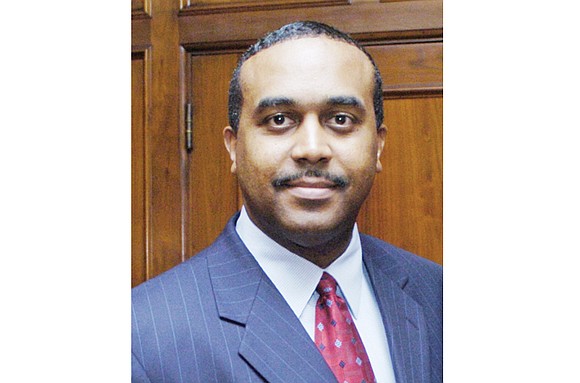Mayoral election: Time to navigate Richmond toward a better future
11/4/2016, 9:26 p.m.
Terone B. Green
It was the early to mid-1990s. The setting: The Commonwealth Club on West Franklin Street in Downtown.
A gathering of Richmond’s most prominent civic and business leaders — African-American, white people, public and private representatives — was underway. The order of business? To envision Richmond’s future.
Among the primary plans on the agenda: Richmond’s riverfront, a lofty vision of businesses, restaurants, specialty shops and a thriving night life along one of the city’s most prized assets, the James River.
But more than 20 years later, we find it was all just a dream.
That vision offered in an annual meeting by Richmond Renaissance, which has since been renamed Venture Richmond, represents just one of the major missed opportunities for a revitalization of Downtown that could have catapulted Richmond to one of America’s leading convention, tourist or destiny vacation cities.
Baltimore, Charlotte, Seattle and Boston — all cities with thriving waterfront developments — attest to the power of economic development when it is done in proper order.
As a former member of the Richmond Planning Commission, I vividly recall the missed opportunities — and the mistakes — of past years. In the case of the envisioned riverfront development, the ball was dropped when officials sought to develop the city from Broad Street down instead of from the riverfront up. Therefore, the hustle and bustle of thousands of tourists visiting Downtown on a weekly basis never really appeared. Then, the 6th Street Marketplace and its symbolic bridge were lost, the clanging of the GRTC trolleys was short-lived and the city still awaits the leadership that could navigate it back toward a vibrant future.
Richmond’s election of a new mayor has largely focused on educational issues — the crucial elements of Richmond’s school funding, administration and the future of our youths. However, we must not neglect those issues of equal importance, such as economic development, regionalism and Richmond’s reputation as a gateway city.
With this weighty conversation comes a new opportunity not only to learn from past mistakes, but revisit them and even capitalize on them. Richmond has far too many assets to not rise to its potential as a thriving, bustling city.
In that regard, here are a few suggestions on ways to correct the mistakes that have stymied our growth in the past:
• We have digressed from the planning of some of our best visions, perhaps due to hopelessness born from past failures. Therefore, let’s press to revisit the riverfront project that Richmond Renaissance had on the table. Let’s add exciting businesses, restaurants, water walks, family activities and boat flips to the community of homes that already have begun along the shores of the James River.
• We have failed to develop the city strategically, one project connecting to the other. For example, as the riverfront builds up, we must begin to attract anchor retail stores back to Downtown. Smaller stores will follow for the revival of Downtown shopping.
• We have neglected to properly promote some of Richmond’s major events that would attract national audiences. What about Richmond’s festivals? Why not rebrand Richmond as a city of festivals — promoting our Arts in the Park, the Richmond Jazz Festival, the 2nd Street Festival, Grand Illumination and even the Christmas Parade as national attractions for businesses and families.
• And then there’s Richmond’s history, which has for years sparked personal and political rancor — especially Richmond’s Confederate history. This strife has held us back. The fact is as the former capital of the Confederacy, Richmond has a history that’s a microcosm of American history and, in that regard, Virginia is the pivotal state in our nation. Therefore, the key will be to tell the honest story in its proper context as a continuum. In doing so, we must highlight and promote such features as the slave artifacts of Shockoe Bottom; the Headman Statue on Brown’s Island, a tribute to the enslaved bateau men who mastered the turbulent waters of the James River. We must commemorate the victorious march of the United States Colored Troops into Richmond on April 3, 1865. Finally, we must promote the Arthur Ashe statue on Monument Avenue, the John Mitchell marker and the pending Maggie L. Walker statue in historic Jackson Ward, as well as other historic sites and representations of the monumental victories of African-Americans in every category of American life.
• Finally, there’s the bureaucracy that slows down progress. These listed developments would not be possible if not undergirded by amenities and policy changes that would make economic development activities easier to navigate. For example, the lack of convenient parking Downtown around City Hall must also be dealt with as a courtesy and respect to citizens. Along those lines, tax breaks and incentives could be granted for businesses and developers who renovate and move into the boarded up buildings along Broad Street.
The race for vice president by U.S. Sen. Tim Kaine, Richmond’s former mayor, has attracted the eyes of the nation to Richmond. Early in the campaign, his presidential running mate, Hillary Clinton, credited Sen. Kaine, saying he “helped turn that struggling city around.” The fact is every mayor has had his or her turn at making Richmond better, including the successes of former Mayor L. Douglas Wilder and current Mayor Dwight C. Jones.
Now is an opportunity to soar beyond our highest expectations by revisiting and learning from our failures of the past.







